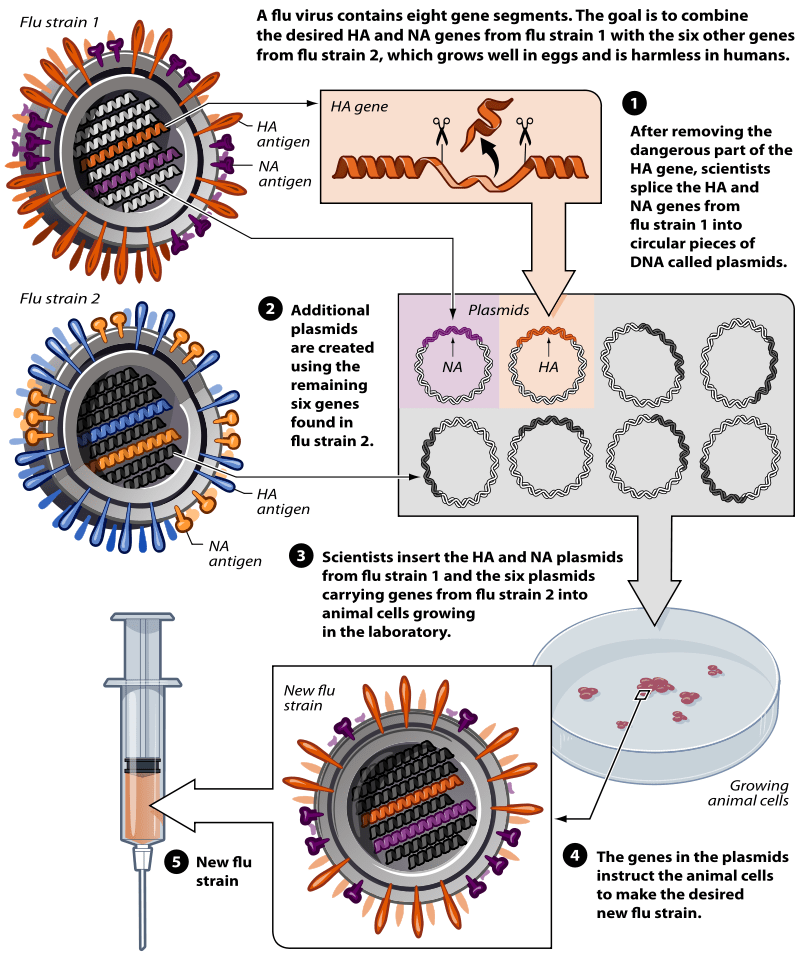Difference Between Forward and Reverse Genetics
Table of Contents
Key Difference – Forward vs Reverse Genetics
With the development of modern technology, genetically related techniques have been developed along the same vector that led to the basis of modern molecular biology. Different techniques under this category could be explained. Such techniques are used in the process of determination and investigation of different genomic traits of living organisms. Forward and reverse genetics are such techniques in the context of the above processes. Forward genetics is the path of determining the basis of genetics that is responsible for a particular phenotype. Reverse genetics is a technique that is utilized to investigate and understand the function of a particular gene or a gene sequence through the analysis of the phenotype that is generated by the gene. This is the key difference between forward and reverse genetics.
CONTENTS
1. Overview and Key Difference
2. What is Forward Genetics
3. What is Reverse Genetics
4. Similarities Between Forward and Reverse Genetics
5. Side by Side Comparison – Forward vs Reverse Genetics in Tabular Form
6. Summary
What is Forward Genetics?
Forward genetics can be defined as the path of determining the basis of genetics that is responsible for a particular phenotype. Naturally occurring mutations and mutants that are induced by radiation, chemicals or transposable elements (insertional mutagenesis) were the initial approaches for forward genetics. It is then followed by breeding, isolation of the mutant individuals and lastly the mapping of the gene. Forward genetics is performed to determine the gene function through the analysis of the phenotypic effects of DNA sequences that are altered. Therefore, it is considered antagonistic to reverse genetics. Mutant phenotypes are usually examined beforehand to identify the particular gene responsible and can give rise to genes being named after the respective mutant phenotype. Drosophila rosy gene named after the mutant’s eye color is an example.
In the context of conventional genetical approach, a researcher handling the determination process of the genetic basis for phenotypes would directly map the gene on the particular chromosome where it is present. This is done through cross-breeding with different individuals where those individuals carry different other uncommon traits. Statistical analysis will be carried out to determine the frequency of occurrence where the two traits are inherited together. This convention methodology of mapping takes a considerable long period of time.
What is Reverse Genetics?
In the context of reverse genetics, it is a technique that is utilized to investigate and understand the function of a particular gene or a gene sequence through the analysis of the phenotype that is generated by the gene. This methodology is the total opposite of the concept forwards genetics. With the intention of learning the influence of a particular sequence upon its phenotype or to investigate the biological function of it, the modern researches tamper the DNA sequence where they engineer a particular change in the sequence or disrupt it. Once intentional changes are made to the DNA sequence, the researcher will observe the phenotypic changes that will take place as a result of it. Intentional changes to the genetic sequence are done by different means of methodologies and genetic techniques. These techniques include directed deletions, point mutations, gene silencing and the use of transgenes.

Figure 01: Reverse Genetics
In directed deletions and point mutations, a site-directed mutagenesis is induced. A site-directed mutagenesis refers to the fact where a change is induced through a mutation in regulatory regions of a promoter of a gene. A site-directed mutagenesis could also be achieved through inducing codon changes in the open reading frame. This technique is also used to develop null alleles where it creates a nonfunctional gene. Gene silencing could be achieved by using RNAi (RNA interference). This is a double-stranded RNA that will target a particular mRNA and disrupts it and thereby prevent the translation process. Hence, the phenotype is not expressed since the particular protein is not produced.
What is the Similaritiy Between Forward and Reverse Genetics?
- Both Forward and Reverse Genetics phenomena target the genetic of a particular phenotype.
What is the Difference Between Forward and Reverse Genetics?
Forward vs Reverse Genetics | |
| Forward genetics can be defined as the path of determining the basis of genetics responsible for a particular phenotype. | Reverse genetics is a technique that is utilized to investigate and understand the function of a particular gene or a gene sequence through the analysis of the phenotype that is generated by the gene. |
Summary – Forward vs Reverse Genetics
Forward genetics can be defined as the path of determining the basis of genetics that is responsible for a particular phenotype. Naturally occurring mutations and mutants that are induced by radiation, chemicals or transposable elements (insertional mutagenesis) was the initial approach for forward genetics. Forward genetics is performed to determine the gene function through the analysis of the phenotypic effects of DNA sequences that are altered. Reverse genetics is a technique that is utilized to investigate and understand the function of a particular gene or a gene sequence through the analysis of the phenotype that is generated by the gene. Intentional changes to the genetic sequence are done by different means of methodologies and genetic techniques. These techniques include directed deletions, point mutations, gene silencing and the use of transgenes etc. This is the difference between forward and reverse genetics.
Reference:
1.Griffiths, Anthony JF. “Reverse genetics.” An Introduction to Genetic Analysis. 7th edition., U.S. National Library of Medicine, 1 Jan. 1970. Available here
2.Takahashi, Joseph S., et al. “Forward and Reverse Genetic Approaches to Behavior in the Mouse.” Science (New York, N.Y.), U.S. National Library of Medicine, 17 June 1994. Available here
Image Courtesy:
1.’ReverseGeneticsFlu’By Mouagip – Own work (Public Domain) via Commons Wikimedia
ncG1vNJzZmivp6x7pbXFn5yrnZ6YsqOx07CcnqZemLyue8OinZ%2Bdopq7pLGMm5ytr5Wau26yzquumqqUYq6vsIyvqmaqlauys7%2FEZp6eppWptqS%2Fjg%3D%3D